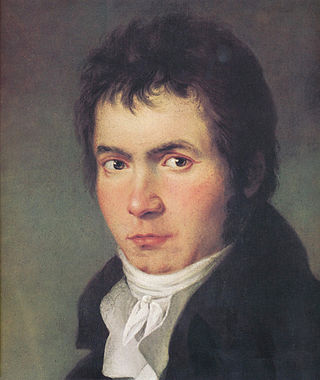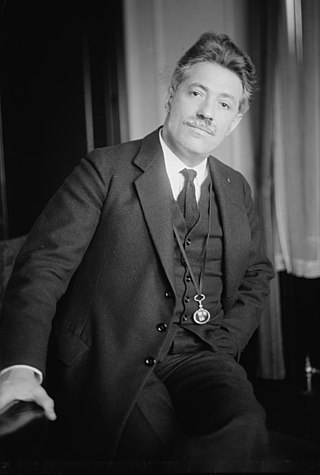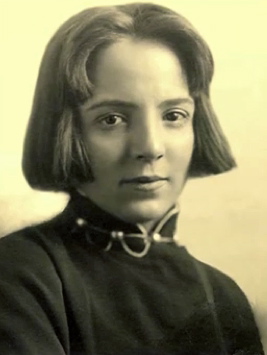
In music, a cadenza, is, generically, an improvised or written-out ornamental passage played or sung by a soloist(s), usually in a "free" rhythmic style, and often allowing virtuosic display. During this time the accompaniment will rest, or sustain a note or chord. Thus an improvised cadenza is indicated in written notation by a fermata in all parts. A cadenza will usually occur over either the final or penultimate note in a piece, the lead-in, or the final or penultimate note in an important subsection of a piece. A cadenza can also be found before a final coda or ritornello.

The Violin Concerto in D major, Op. 61, was written by Ludwig van Beethoven in 1806. Its first performance by Franz Clement was unsuccessful and for some decades the work languished in obscurity, until revived in 1844 by the then 12-year-old violinist Joseph Joachim with the orchestra of the London Philharmonic Society conducted by Felix Mendelssohn. Joachim would later claim it to be the "greatest" German violin concerto. Since then it has become one of the best-known and regularly performed violin concertos.

Eugène-Auguste Ysaÿe was a Belgian virtuoso violinist, composer, and conductor. He was regarded as "The King of the Violin", or, as Nathan Milstein put it, the "tsar".

Friedrich "Fritz" Kreisler was an Austrian-born American violinist and composer. One of the most noted violin masters of his day, and regarded as one of the greatest violinists of all time, he was known for his sweet tone and expressive phrasing. Like many great violinists of his generation, he produced a characteristic sound which was immediately recognizable as his own. Although it derived in many respects from the Franco-Belgian school, his style is nonetheless reminiscent of the gemütlich (cozy) lifestyle of pre-war Vienna.

George Enescu, known in France as Georges Enesco, was a Romanian composer, violinist, pianist, conductor, and teacher and is regarded as one of the greatest musicians in Romanian history.

Henryk Bolesław Szeryng was a Polish-Mexican violinist.
James Ehnes, is a Canadian concert violinist and violist.

Yi-Jia Susanne Hou is a Canadian violinist.

The sonatas and partitas for solo violin are a set of six works composed by Johann Sebastian Bach. They are sometimes referred to in English as the sonatas and partias for solo violin in accordance with Bach's headings in the autograph manuscript: "Partia" was commonly used in German-speaking regions during Bach's time, whereas the Italian "partita" was introduced to this set in the 1879 Bach Gesellschaft edition, having become standard by that time. The set consists of three sonatas da chiesa in four movements and three partitas in dance-form movements. The 2nd Partita is widely known for its Chaconne, considered one of the most masterly and expressive works ever written for solo violin.

Ferdinand Ernst Victor Carl David was a German virtuoso violinist and composer.

Sophie Carmen Eckhardt-Gramatté was a Russian-born Canadian composer and virtuoso pianist and violinist.

Nathan "Tossy" Spivakovsky, a Jewish, Russian Empire-born, German-trained violin virtuoso, was considered one of the greatest violinists of the 20th century.

Andreas Makris was a Greek-American composer and violinist, born in Kilkis, Greece, on March 7, 1930. He was a Composer-in-Residence for many years at the National Symphony Orchestra in Washington DC, working with conductors such as Howard Mitchell, Mstislav Rostropovich, Antal Dorati, and Leonard Slatkin. He composed around 100 works for orchestra, chamber ensembles, and solo instruments, including the Aegean Festival Overture, which, transcribed for concert band by Major Albert Bader of the USAF Band, became a popular piece with US bands. Grants and awards he received include the Damroch Grant, National Endowment for the Arts Grant, the Martha Baird Rockefeller Award, ASCAP Award, the Fulbright Scholarship, and citations from the Greek Government.
The Sonatina for Violin and Harpsichord is a three-movement, neoclassical chamber work composed by Walter Piston in 1945, that marks the beginning of his postwar style.

Sergey Khachatryan is an Armenian violinist. Since 1993 he has lived in Germany where he gave his first orchestral concert at the age of nine in the Kurhaus, Wiesbaden.
Ossy Renardy was an Austrian classical violinist, who made a major impression in Europe before migrating to the United States at age 17. There he made the first complete recording of any version of the 24 Paganini Caprices. He became an American citizen and served in the US Army in World War II, giving almost 500 concerts for the troops. He returned to the concert stage after the war, but only five years into his adult career he was killed in a car crash in New Mexico, at the age of 33. He left a number of recordings.

Manuel Quiroga Losada was a Spanish violinist and composer. He was described by music critics as "the finest successor of Pablo de Sarasate", and he is sometimes referred to as "Sarasate's spiritual heir". Enrique Granados, Eugène Ysaÿe and other composers dedicated compositions to him. Violinists Ysaÿe, Fritz Kreisler, George Enescu, Mischa Elman and Jascha Heifetz, as well as composers such as Igor Stravinsky and Jean Sibelius, held Quiroga's artistry in great regard. Portuguese cellist Guilhermina Suggia described his playing of Tartini's Devil's Trill Sonata as "marvellous and flawless".
Pierre D'Archambeau born from Belgian parents, was an American violin virtuoso and pedagogue













